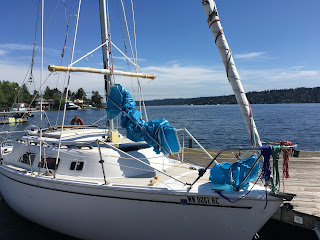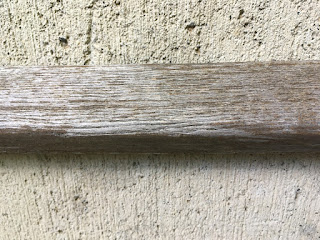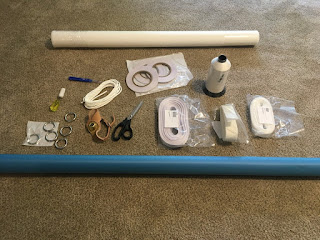Version 1.1 ...

I bought a pair of the biggest, beefiest screw eyes I could find at Lowe’s and installed one in each end of the yard-spar. This added a few inches to the length of the yard-spar; the head of the sail now spans 88” instead of 84” as before: I took her out single-handed with the upgraded yard-spar and sure enough, the profile of the head of the sail improved quite a bit: Yes, that looks much better, and the sail is more effective at capturing the wind. Today the breeze was moderate, perhaps 5-10 knots, gusting up to 12 to 14 knots and I wanted to see if I could convert the boat from fore-and-aft rigged to square rigged in those conditions, so I actually started sailing upwind with the square sail stowed and the genoa unfurled. It all seemed fine until the first tack, when the working sheet got hung up on the yard-spar during the maneuver; this caused a bit of chaos and some entertainment for anyone on shore watching me bumbling around trying to sort everything out, whic...




